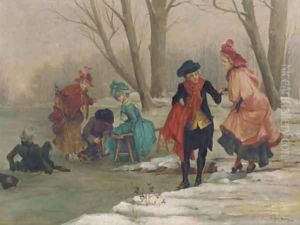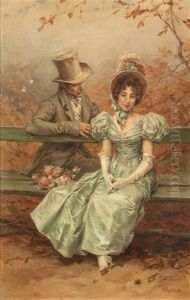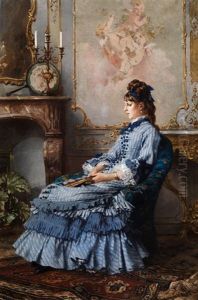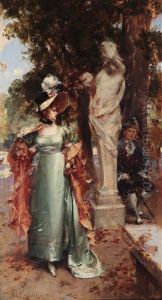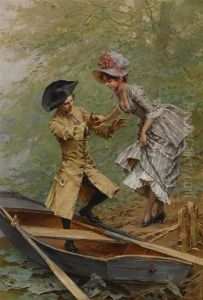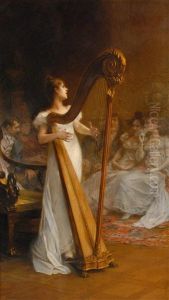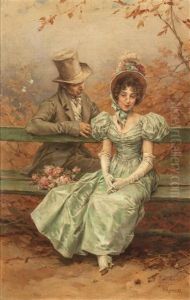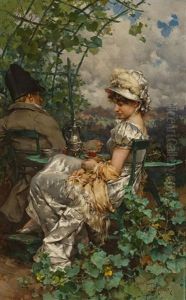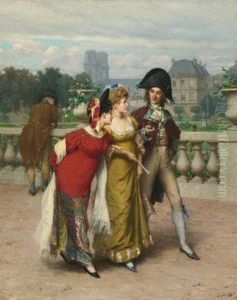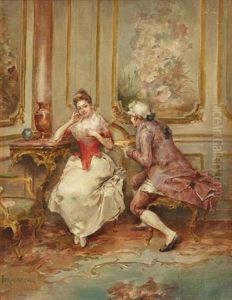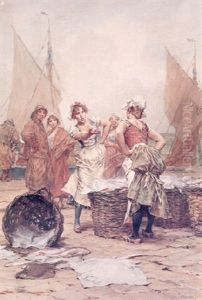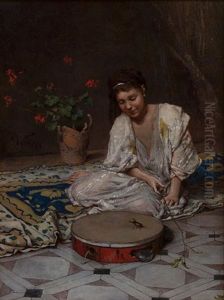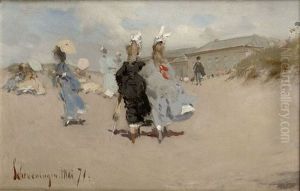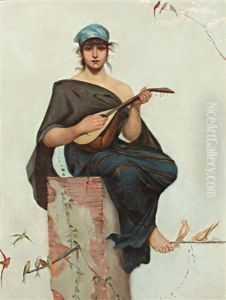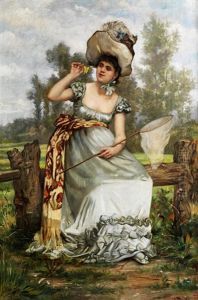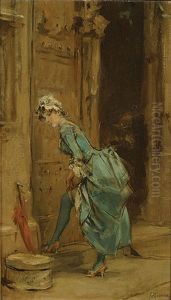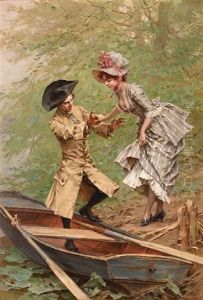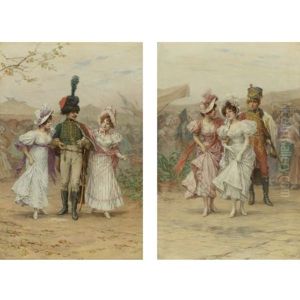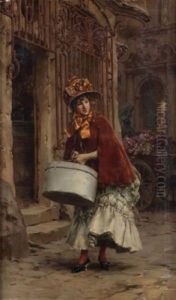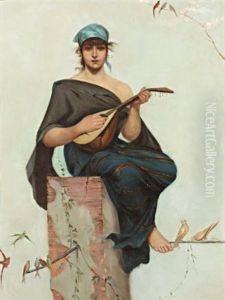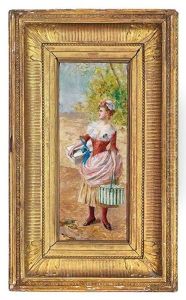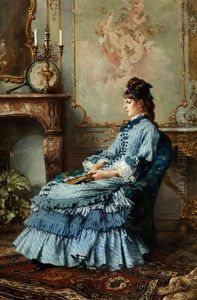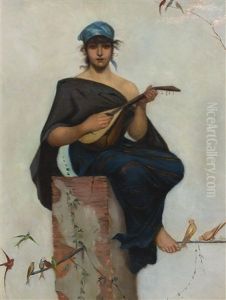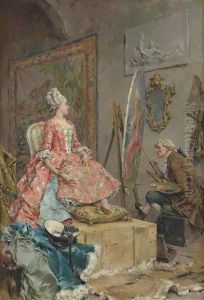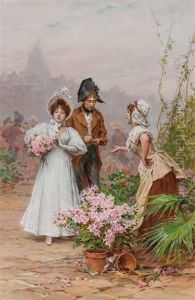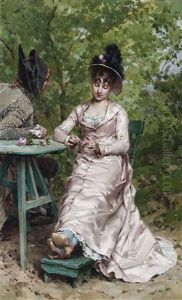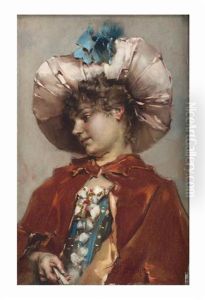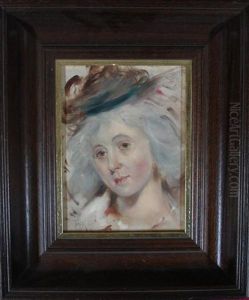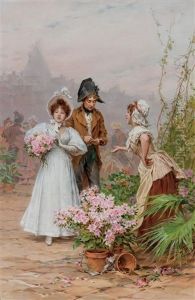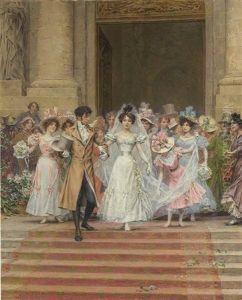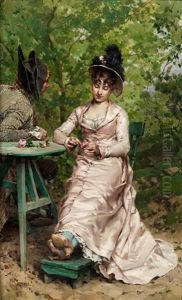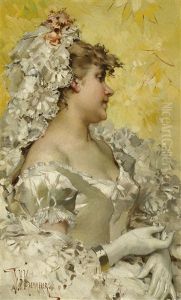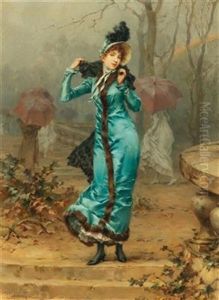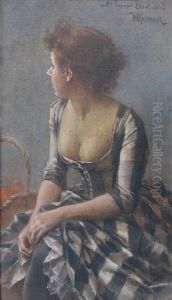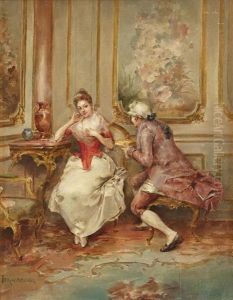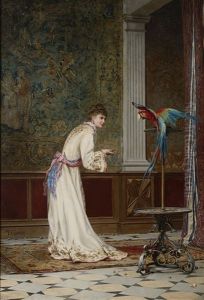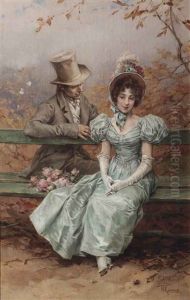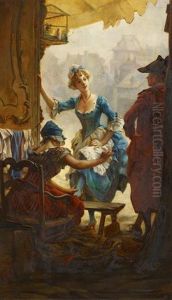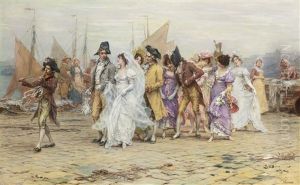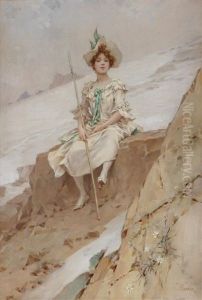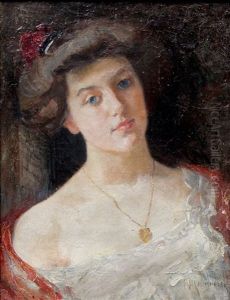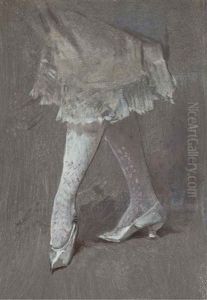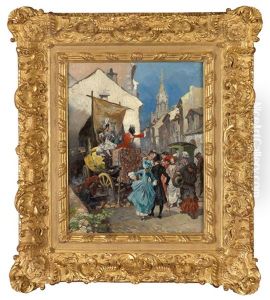Frederik Hendrik Kaemmerer Paintings
Frederik Hendrik Kaemmerer was a Dutch painter, born on April 23, 1839, in The Hague, Netherlands. He embarked on his artistic journey at a young age, initially studying at the Royal Academy of Art in The Hague. Kaemmerer's early work was heavily influenced by the Dutch Golden Age of painting, a period that was renowned for its attention to detail, vivid colors, and emphasis on light and shadow. However, his style and thematic interests evolved significantly over the course of his career.
In the early stages of his career, Kaemmerer's work reflected the traditional Dutch landscape and genre painting styles. However, after moving to Paris in the late 1860s, his artistic direction underwent a significant transformation. Influenced by the French impressionists and the city's vibrant art scene, Kaemmerer began to adopt a more lighthearted and romantic approach to his subjects. He became known for his genre scenes, depictions of fashionable Parisian life, and elegant portrayals of women, which were characterized by their bright colors, dynamic brushwork, and a keen sense of movement and light. This marked departure from his earlier, more somber work reflected the broader changes occurring within the art world at the time, as artists moved away from traditional subjects and techniques in favor of more experimental approaches.
Despite his Dutch roots, Kaemmerer achieved significant success in France, becoming a part of the French art scene and exhibiting his work at the Paris Salon, where he received positive reviews and recognition. His paintings captured the essence of French bourgeois life and leisure in the late 19th century, resonating with viewers for their charm, wit, and technical skill. Among his most celebrated works are scenes of leisure and elegance, such as promenades in the parks, beach scenes, and the interiors of Parisian salons, which encapsulated the joie de vivre of the era.
Frederik Hendrik Kaemmerer passed away on March 4, 1902, in Paris, France. Today, his work is appreciated for its historical value and its contribution to the transitional period of European art, bridging the gap between the academic traditions of the 19th century and the burgeoning modernist movements of the early 20th century. Kaemmerer's paintings can be found in numerous museum collections across Europe and continue to be celebrated for their beauty, charm, and the insight they provide into the cultural life of Paris during the Belle Époque.

